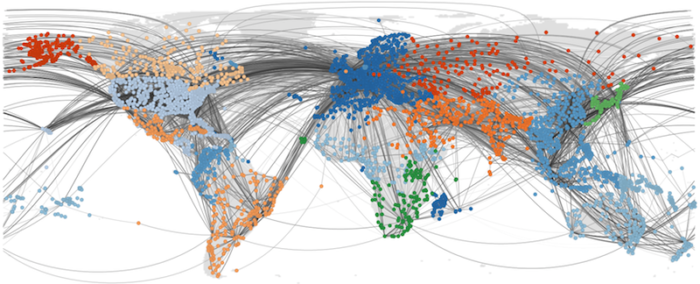This computer simulation estimates relative import risks of the 2014 Ebola Virus Outbreak Epidemic induced by global mobility and transportation!
This outbreak is considered as an “extraordinary event” and a public health risk to other countries. One reason for this is the high mobility of populations including transnational-border crossing.
The interactive network analysis provided here displays computationally estimated relative import risks. But before using this tool, please make sure you understand what these quantities mean and how to interpret them.

2014 Ebola Outbreak: Facts
Ebola hemorrhagic fever caused by a virus is a severe disease with a case fatality rate of up to 90%. Humans can contract the disease from infected animals such as flying foxes, gorillas and chimpanzees. Human-to-human transmission is possible in direct contact with symptomatic patients and their body fluids and an ebola outbreak can emerge.
There have been several epidemics in sub-Saharan Africa in recent years. The current epidemic in West Africa probably goes back to an index patient in Guinea in December 2013.

Meanwhile the disease has spread to different countries. This outbreak is considered as an “extraordinary event” and a public health risk to other countries. One reason for this is the high mobility of populations including transnational-border crossing.
The interactive network analysis provided here displays computationally estimated relative import risks. But before using this tool, please make sure you understand what these quantities mean and how to interpret them.













[…] Ebola may not be the only cause of fear to arrive in the US recently. […]